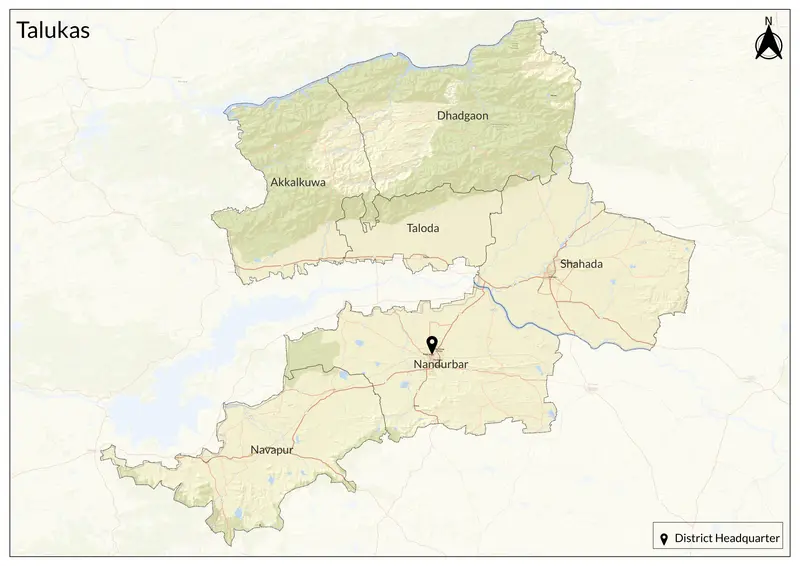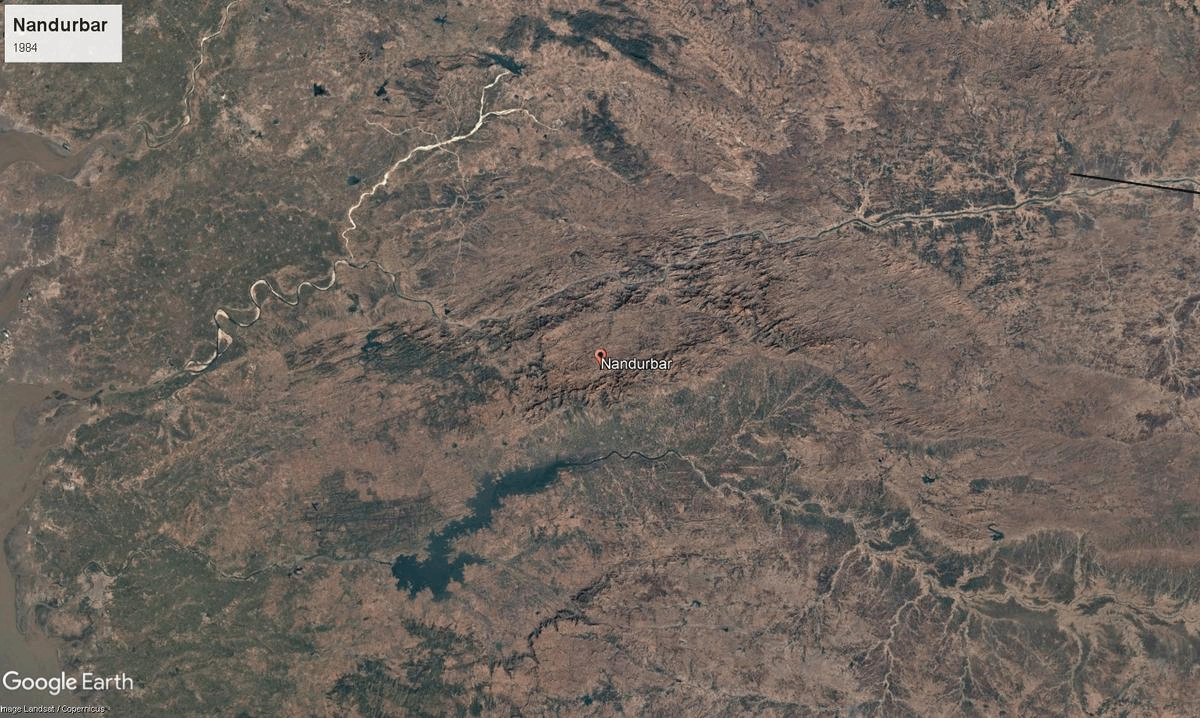Nandurbar

5,034 sq. km
~17.52 lakh (2019)
972 (2011)
~ ₹14,106 crore (2019)
~ ₹80,503 (2019)
Nandurbar district, in the northwest corner of Maharashtra, is known as a tribal region and was carved out of Dhule in 1998. The etymology of “Nandurbar” traces back to ancient “Nandanagri”, named after King Nandaraja, and is also referenced as “Rasika” in historic records. During Yadava rule, the region was called “Seunadesa” after King Seunachandra. Later, its name changed to “Khandesh” (reflecting the Faruqi kings’ title “Khan”). Yet, another idea is that the name has evovled from 'Nandrecha Bazar' (market of Nander). These shifting identities highlight Nandurbar’s long-standing role as a regional crossroads.
In 1906, Khandesh was divided into two districts for administrative purposes. After the reorganization of states in 1956, it was included in Bombay State and later merged into Maharashtra in 1960. Nandurbar comprises six talukas: Nandurbar, Navapur, Shahada, Taloda, Akkalkuwa, and Akrani Mahal (Dhadgaon). Being tribal district, it is linguistically very rich, with Bhili, Marathi, Khandeshi, Pauri Bareli, Pawari, Mawchi, Urdu, Kukna, Hindi, Gujarati, and Gujari spoken across different communities.
The northern edge of the district is marked by the great Narmada River, while the Satpuda hills define much of the landscape, earning it the traditional name “Satpuda Pradesh” (Seven Hills Region). Geographically, Nandurbar is a hilly district, dotted with wooded slopes, valleys, and dotted by rivers like the Narmada and Tapi. The physiography supports a mosaic of forests, rich wildlife, and agricultural lands, even hot springs.
The district is home to several notable cultural and natural sites. The Kedareshvara Mandir at Prakasha, a twin-domed structure, is dedicated to Kedareshwara, a form of Bhagwaan Shiv. Asthamba in Akrani taluka hosts an annual fair, drawing visitors from across the region. The district’s economy is primarily agrarian, with pulses, red chili, and pigeon pea (tur dal) being major crops. Navapur taluka is famous for its Navapur Tur Dal, which received a Geographical Indication (GI) tag in 2016 for its distinct quality and local significance. Apart from crop farming, poultry farming is also prominent, with several poultry farms operating in the area. The district's industrial sector includes agro-based industries, such as sugar mills, toor dal mills, and food processing units, which support the local economy and generate employment opportunities.
